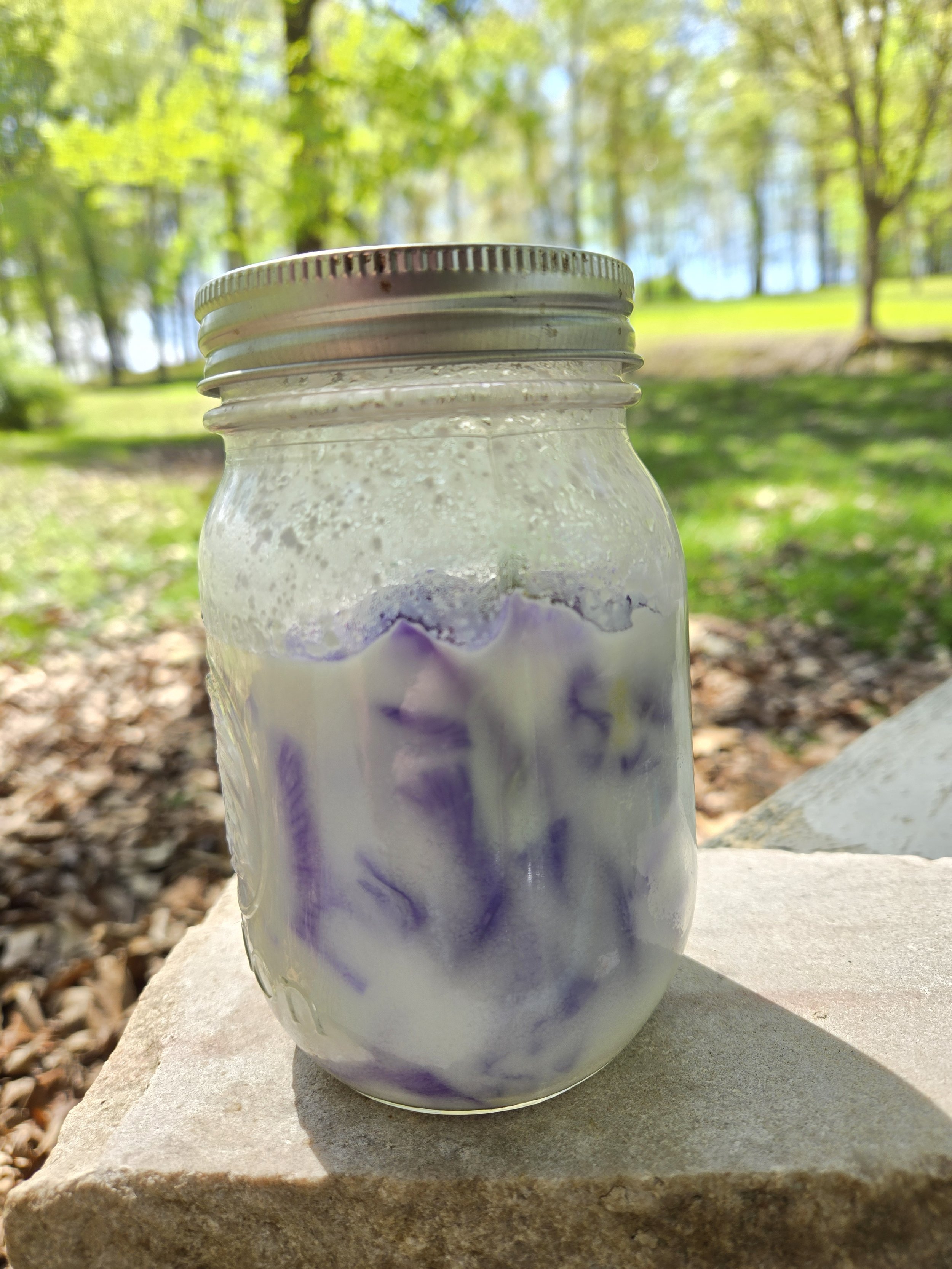Wildcrafted Solid Perfume
Using garden flowers or wildflowers for natural fragrance is one way to carry the joy of spring with us everywhere we go. This spring, I was blessed with an abundance of irises, so that’s what I will be using in this very simple recipe. Other plants ideal for solid perfume include honeysuckle, magnolia blossoms, lilacs, roses, kudzu blossoms, and various herbs such as basil, lemon balm, and mint. I plan on making honeysuckle perfume next. Please review the rules of foraging before you begin.
Solid perfume is a cinch to make. All you need is a very fragrant plant and some fat that stays solid at room temperature. In the old days, they used beef or deer tallow. It’s not that I’m not a good sport, but rubbing animal fat all over my body just isn’t my first choice in fragrance application. So, I use refined coconut oil because it is odorless. It is perfectly fine to use unrefined coconut oil, but keep in mind that the coconut scent will mask the delicate fragrance of your natural perfume.
Another thing to keep in mind is that your fragrance will be light, so don’t expect a department store perfume experience. That takes alcohol and synthetic fragrances, and a celebrity spokesperson. This is more like rolling down your car windows and catching a faint whiff of fresh spring blossoms. Simple and glorious.
Step one: Collect flower blossoms
It is best to collect blossoms early in the morning, before the sun has a chance to burn away the fragrance oils. However, it’s not the end of the world if you sleep in. We’re trying to do this well, not perfectly.
In the case of the irises, I picked enough to fill a pint jar. Try to keep the green parts out of this, unless you want a vegetal aroma. Keep in mind that you will have to repeat this process over the course of several days, so make sure that you have daily access to fresh blossoms and make sure there are plenty of flowers to pick in the first place. You don’t want to deplete your garden. These irises grew from very old rhizomes that once lived in the garden of a family friend who has now passed, so these flowers are very special. Also, the iris is the state flower of Tennessee, my home state. So, when I wear this perfume, I will carry with me my heritage.
Step two: Add coconut oil
Melt coconut oil and pour to cover the flowers completely. I melted the oil simply by being outside in 80 degree weather. However, you can place a jar of solid coconut oil in a bowl of warm water to melt it. You could probably use the microwave, but that’s not very romantic, so I don’t recommend it. In this particular batch, I used a little over a cup of melted oil. Put a lid on the jar and place it on your kitchen counter or in your pantry overnight. The oil will solidify and that’s perfectly okay.
Step three: Do it all again
This is where the process begins to repeat itself, so I recommend calling in some back up for companionship to alleviate boredom. My cat Howie is always there to help. In fact, he would probably swear that he’s the one that made this perfume. He did not, because of the whole lack of thumbs situation. But he did tell me what to do the entire time. Personnel management is his purview.
Ok, where were we? Ah. Yes. Let the oil in the jar melt again. In the meantime, collect new blossoms. The same amount as last time. We’re just doing the same thing over again. Once the oil is melted, carefully run the oil through a fine mesh strainer into another container. I recommend a Pyrex measuring cup, because it’s easy to pour the oil back into the jar, which we will do later. After the oil is strained, toss out the used blossoms. It’s okay to feel a little guilty about it. I do. Add the new blossoms to the previously used jar and cover with the oil you just strained. Replace the lid and let rest over night. Repeat this process until your fragrance is as strong as you wanted. You can expect to do it at least four or five times.
Step four: Pour into containers
When the oil has enough fragrance for you, strain it for the last time and then pour into its final container. I chose pretty purple glass containers this time. Sometimes I use lip balm tins. You could even pour the entire thing into a Tupperware bowl with a lid, if you don’t plan on sharing. Everything in this step is pretty much up to you.
You may add a preservative, if you like, but you’ll have to look up how to do that. I chose not to use preservatives in this particular batch because I divided the batch into eight one-ounce jars that can be used up rather quickly after I distribute them as gifts. Be sure to keep your perfume in a cool environment, as this is meant to be used in its solid state. It will melt if it’s too warm. Coconut oil takes a very, very long time to go rancid. But you will know. Don’t use it after that. It kind of defeats the purpose.
Enjoy your perfume!






